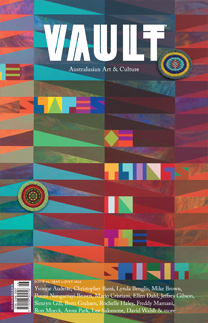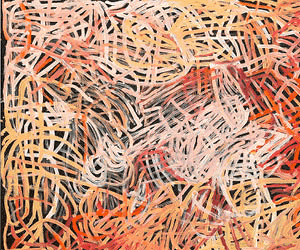El Anatsui
�and the telling of rich and wonderful stories.
The monumental works of senior Ghanaian-born, Nigerian-based artist El Anatsui transcend material and form.
The term ‘alchemical’ is all too easy to use in art writing, given that all great art is transformative – technically, emotionally, conceptually. Granted, it is a weird thing that we do. Painters crush precious metals and minerals, dug from the arid zones of the world, add a few beetle wings and binders, and transform them into sublime objects of beauty or terror. Here,
an Anselm Kiefer painterly memorial to the Holocaust. There, a Monet waterlily pond, or a Marlene Dumas portrait from the abject side of town.
Most painters today – with some glorious exceptions, such as the young Melbourne painter of suburbia Grant Hill – no longer grind their own paint, but wander unthinkingly into the artist supply store and stock up on the already-tubed variety of paint from Liquitex or Winsor & Newton.
The Ghanaian-born, Nigerian-based artist El Anatsui is a thinking artist. He not only invents his own eco-friendly techniques from first principles, but shepherds them through to expanded fields of vision that would make Jackson Pollock’s Blue Poles appear postage stamp-sized by comparison.
So what exactly does he do? When I first heard that he made artworks from discarded aluminium bottle-tops, mostly from liquor bottles, I groaned inwardly and prejudged the work as another example of unconvincing neo-craftism, strong on the feel-good factor. The mistake was all mine. I may be late in coming to his work, but I am not alone in thinking that these monumental works are singularly important to the visual culture of the 21st century. According to ... Subscribe to read this article in full
























